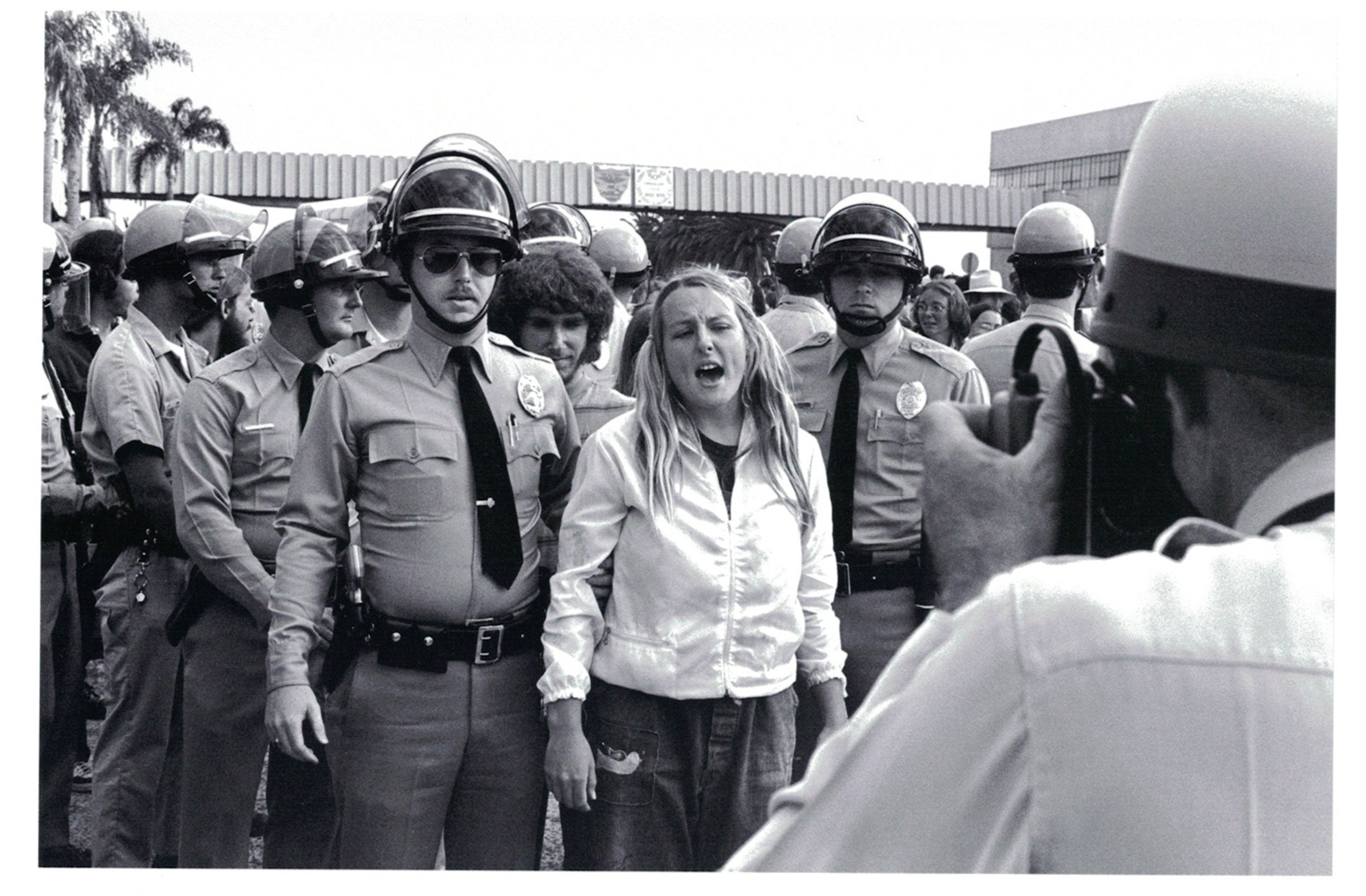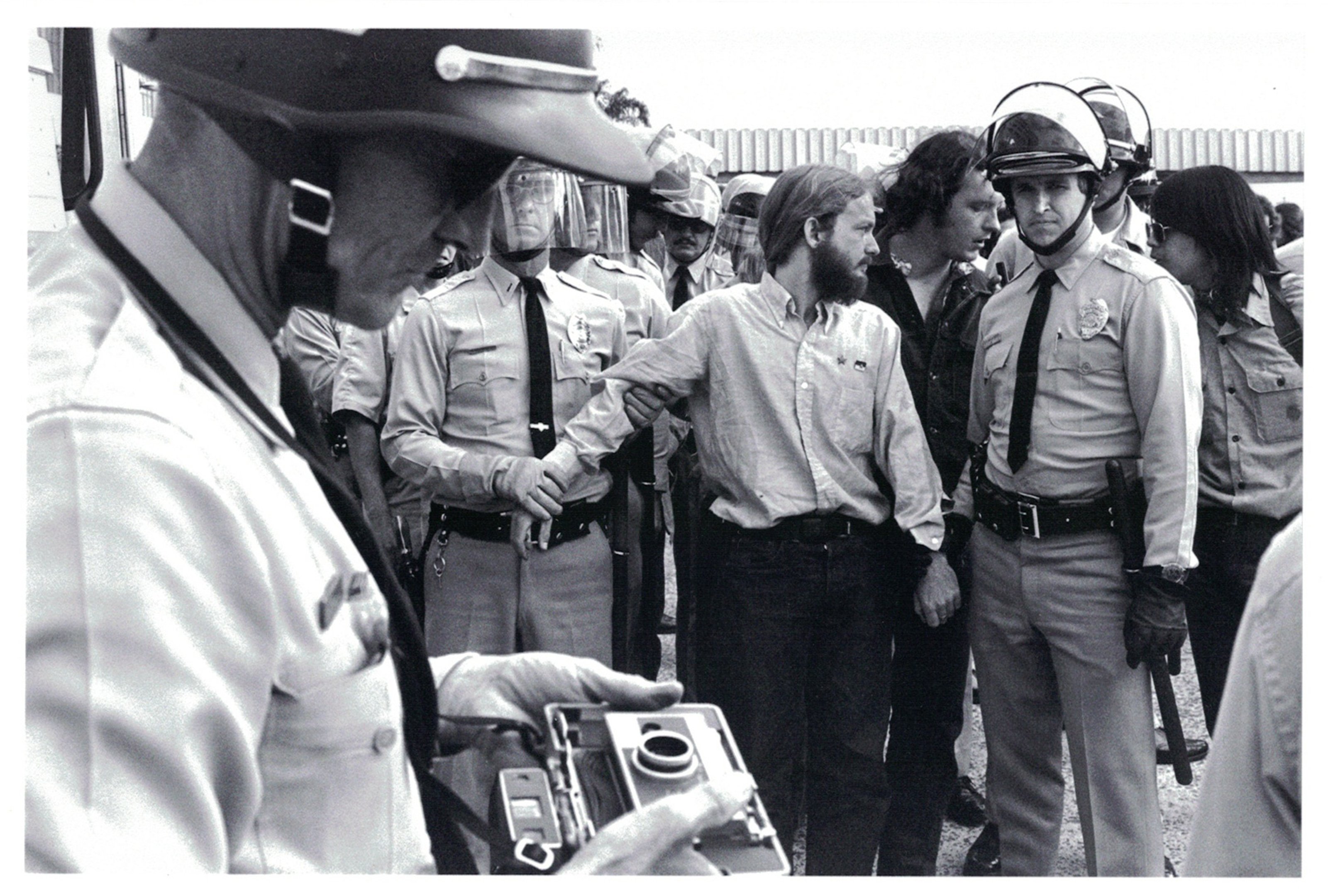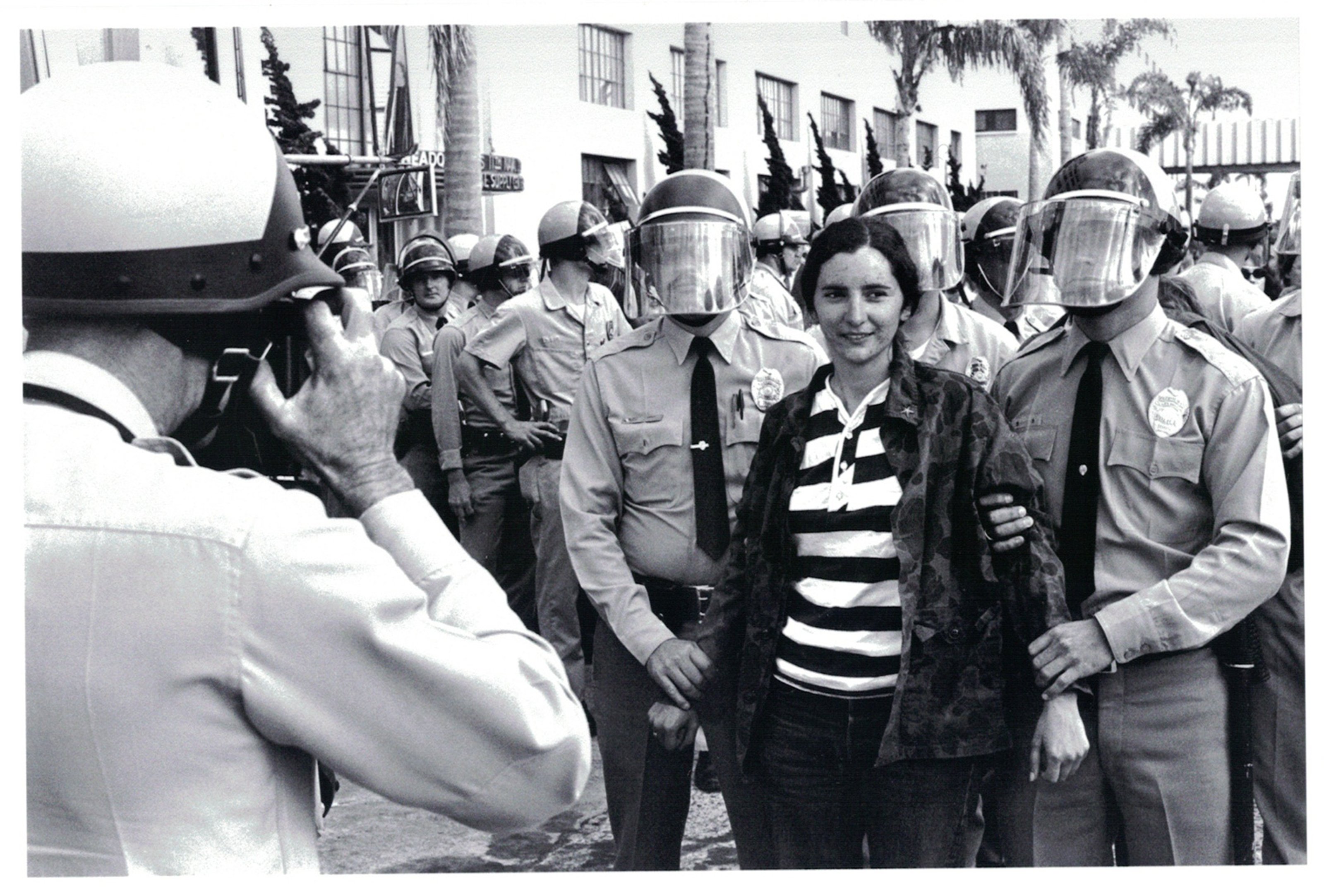On May 4th, 1972 a group of protesters gathered in front of the headquarters of the 11th Naval District for a sit-in to protest the still ongoing Vietnam War. It was one of many events that defied the ongoing war while applying a non-violent strategy of physical intervention. Peaceful protests were a common occurrence of the time, but on this occasion, Fred Lonidier, then still a student at UC San Diego, documented the arrests on camera for his series of photographs, 29 Arrests (1972).

The very nature of such a protest is not only to critique the power relations in the protested system, but to challenge the very system itself by nonviolently sabotaging its mechanisms. The counter-reaction by the state forces consists of reintegrating the protesters back into the system and safeguarding their position in it. Each protester in San Diego was dragged in front of a police photographer, who took the initial picture of the offender, before the arrested were transported off-site and business as usual continued. The state shoots all that challenge it, if not with a gun, at least with a camera.


The act of photographing someone in this context is just as any other recording data which aims to identify the offender and reinstate their position in the system. Fred Lonidier plays with photographic disposition for documentation and its systematic strategy. The standardized images are presented in an encyclopedic manner and the photographed subjects are made tangible, even objectified, for the penal system. In a similar fashion are the images published in newspapers; the artist stands like all journalists behind the police line to take the pictures, neither intervening in the protest nor in the arrests. His artistic work unravels in the framework of its presentation; a rational, boxed display, which lacks any information on the event or the reason for the arrests, or any information on the arrested people. In contrast, journalism provides information to the public on the offense, the arrest, and penal consequences.
29 Arrests, 1972 is not a mimicry of the police work but a counter-documentation of enforcing acts; the arrested are in the center of the composition, but so are the arresting officers and the police photographer, whose shoulders and head are prominently placed in the foreground. Just like the police officers, the photographer acts as enforcer of the system.
End.
Mateo Chacon-Pino (Switzerland/Colombia, 1991) is an independent curator based in Zurich. He graduated in Art History, Theory, History of Photography, and Modern German Literature at the University of Zurich. Chacon-Pino has contributed texts to various publications, and assisted the artist Teresa Margolles on her project for Manifesta 11 in Zurich. In 2013, he co-founded and ran the art space Arbenz in Zurich.
This article is part of a series of special features for the exhibition ‘1-31’ curated by Adam Carr.